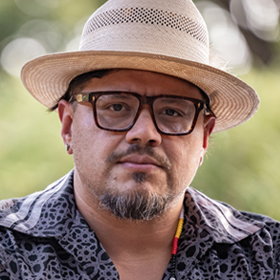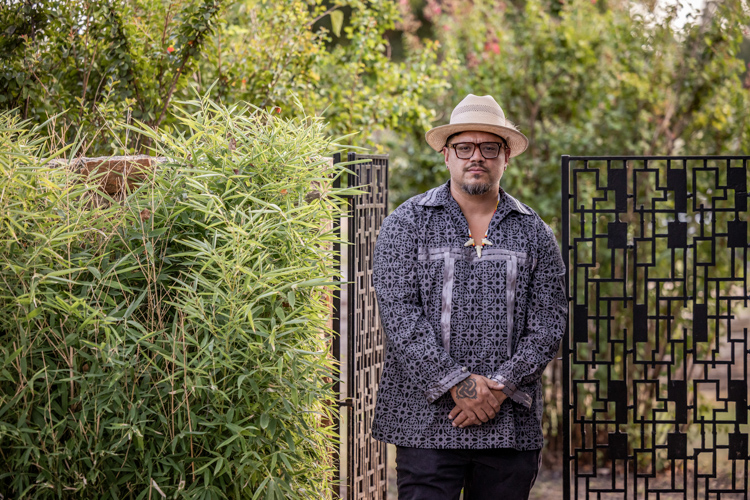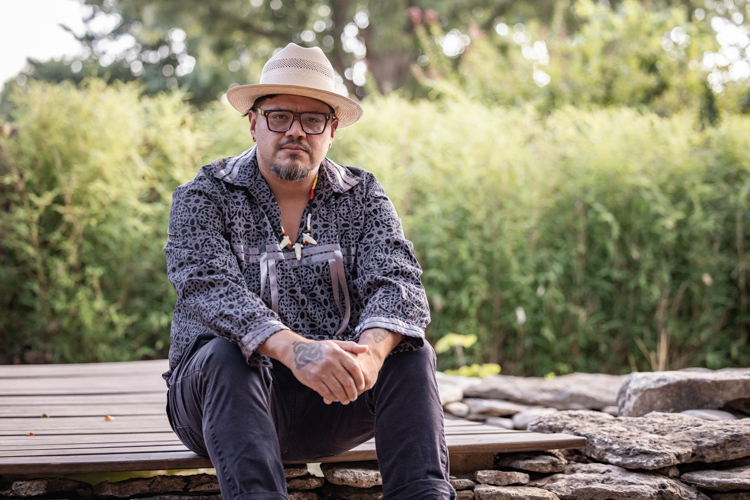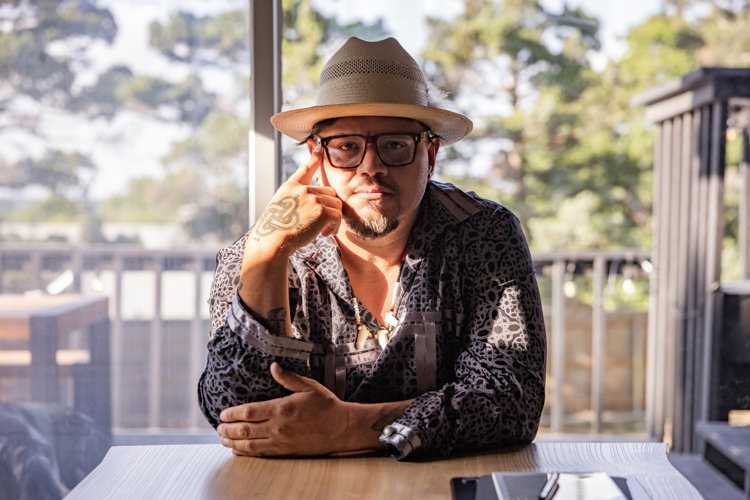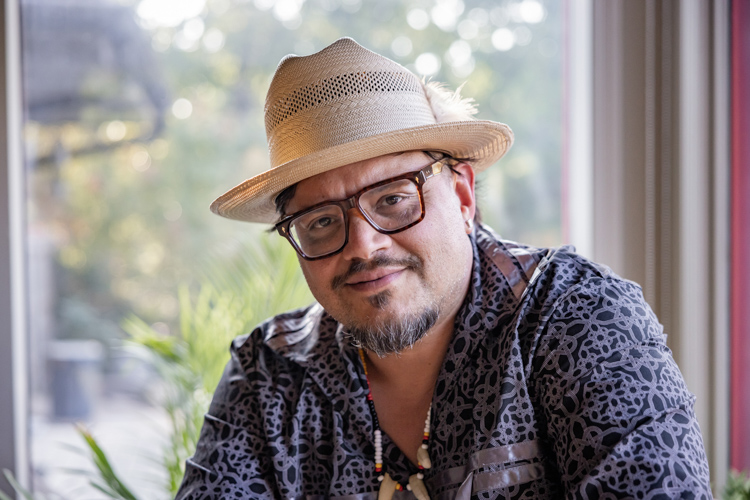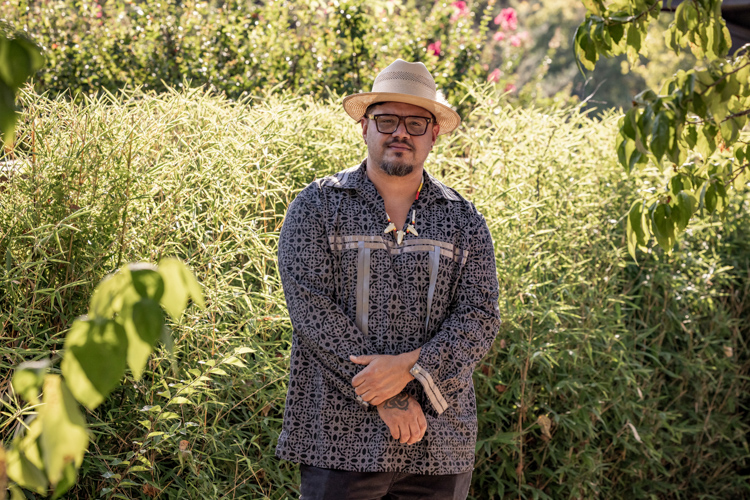About Sterlin's Work
Sterlin Harjo is a filmmaker telling stories about the daily lives of contemporary Native Americans with humor and deep affection. His works reflect the distinct culture of his own Seminole and Muscogee communities in Oklahoma, but his themes, characters, and emotions appeal to broad audiences.
Harjo often centers lives in transition and intergenerational relationships. The short film Goodnight Irene (2004) takes place in the waiting room of an Indian Health Services clinic where an older Seminole woman, Irene, and two young men wait for treatment. The camera lingers on Irene’s lined face, emphasizing the generational differences among the three. She is recognized as a community elder and custodian of knowledge, and her stories inspire one of the men to make a small act of political defiance. Harjo’s first feature-length film, Four Sheets to the Wind (2007), is a coming-of-age story. Protagonist Cufe leaves his home on a rural reservation, moves to Tulsa, and opens himself up to new experiences and opportunities. The transition from adolescence to adulthood forms the backbone of Harjo’s co-created television series, Reservation Dogs (2021–2023). Harjo deftly combines comedy and drama in his portrait of four teens on the cusp of adulthood. The series explores deeply painful issues: mental illness, suicide, death, unreliable parents, and historical traumas (such as abusive boarding schools). Interspersed with these realities are moments of levity and humor: the character of William Knifeman, a spirit who visits one of the teens, is a satirical take on the depictions of Native Americans as brave, stoic warriors imparting wisdom. Knifeman admits he died before fighting in the Battle of Little Big Horn (his horse tripped in a hole), and his advice to lead character Bear is often of dubious value. Over the course of its three seasons, the series expands to include older generations of the town. The teens enter into reciprocal relationships of care with the elders, who pass on knowledge and stories from their younger days. The series ends with the teens helping the elders to reconcile with an estranged friend, and the teens take what they have learned into the next phases of their lives.
Harjo’s collaborative creative process mirrors the expansive kinship networks depicted in Reservation Dogs. He employs primarily Indigenous actors, writers, directors, and crew and often shoots on location in rural Oklahoma. In both artistic output and creative process, Harjo shows nuanced and textured lives of Indigenous people on screen and opens audiences to Indigenous humor, values, and perspectives.







